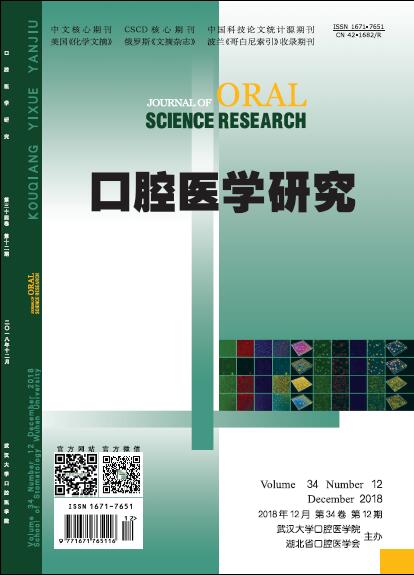|
|
Study on Dynamic Equilibrium of Th1/Th2 and Th17/Treg in Oral Buccal Squamous Cell Carcinoma Model of Syrian Hamster Induced by DMBA
TIAN Yuan-ye, LI Hong-yuan, LI Jun-ping, TANG Zhan-gui
2018, 34(12):
1284-1288.
DOI: 10.13701/j.cnki.kqyxyj.2018.12.006
Objective: To find out the changes of Th1, Th2, Th17, Treg, Th1/Th2, and Th17/Treg in golden hamsters induced precancerous lesions and oral squamous cell carcinoma(OSCC)by the action of carcinogenic agent 7,12- dimethylbenz [a] anthracene (DMBA).To explore the relationship with oral cancer by analyzing the above cells and the ratio of dynamic changes between different groups.Methods: 1) Modeling: using 1 mL 0.5% DMBA to smear the Syrian golden hamster cheek pouch mucosa three times a week to induce precancerous lesions and OSCC models.2) Take blank control group (n=10), negative control group (n=5), precancerous lesion group (n=10), OSCC group (n=18) spleen and grind into single cell suspension and use flow cytometry test.Results: 1) Compared with the control group, there was statistical significance (P<0.05) concerning the number of Th1 cells decreased, the number of Th2 cells increased, the number of Th2 cells decreased, the number of Th17 cells decreased, the number of Treg cells increased, the ratio of Th1/Th2 ratio decreased and the ratio of Th17/Treg ratio was decreased in the oral cancer group (P<0.05).2) Compared with the control group, there was statistical significance (P<0.05) concerning the number of Th1 cells decreased, the number of Th17 cells decreased, the number of Treg cells increased, the ratio of Th1/Th2 ratio decreased, and the ratio of Th17/Treg ratio decreased in precancerous lesions.However, the increase in the number of Th2 cells was not statistically significant (P>0.05).3) Compared with precancerous lesions, there was statistical significance (P<0.05) concerning the ratio of Th17/Treg ratio increased in the oral cancer group; while the number of Th1 cells increased, the number of Th2 cells increas- ed, the number of Th17 cells increased, and the number of Treg cells increased and the decrease of Th1/Th2 ratio were not statistically significant (P>0.05).Conclusion: 1) The shift of Th1/Th2 balance to Th2 maybe involve in the occurrence and development of normal mucosal carcinogenesis.2) The shift of Th17/Treg balance to Treg maybe involve in the occurrence of normal mucosal canceration.
References |
Related Articles |
Metrics
|

